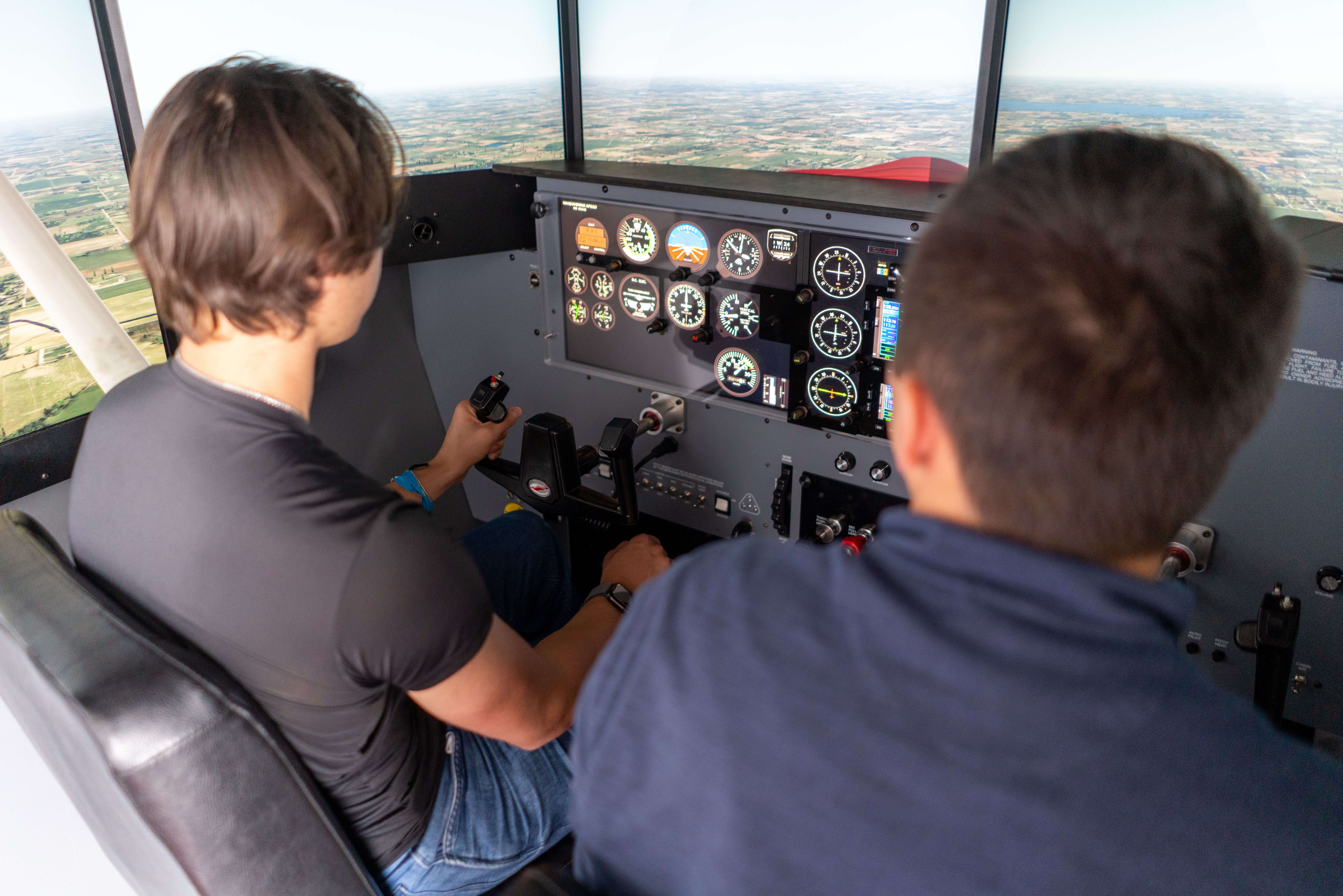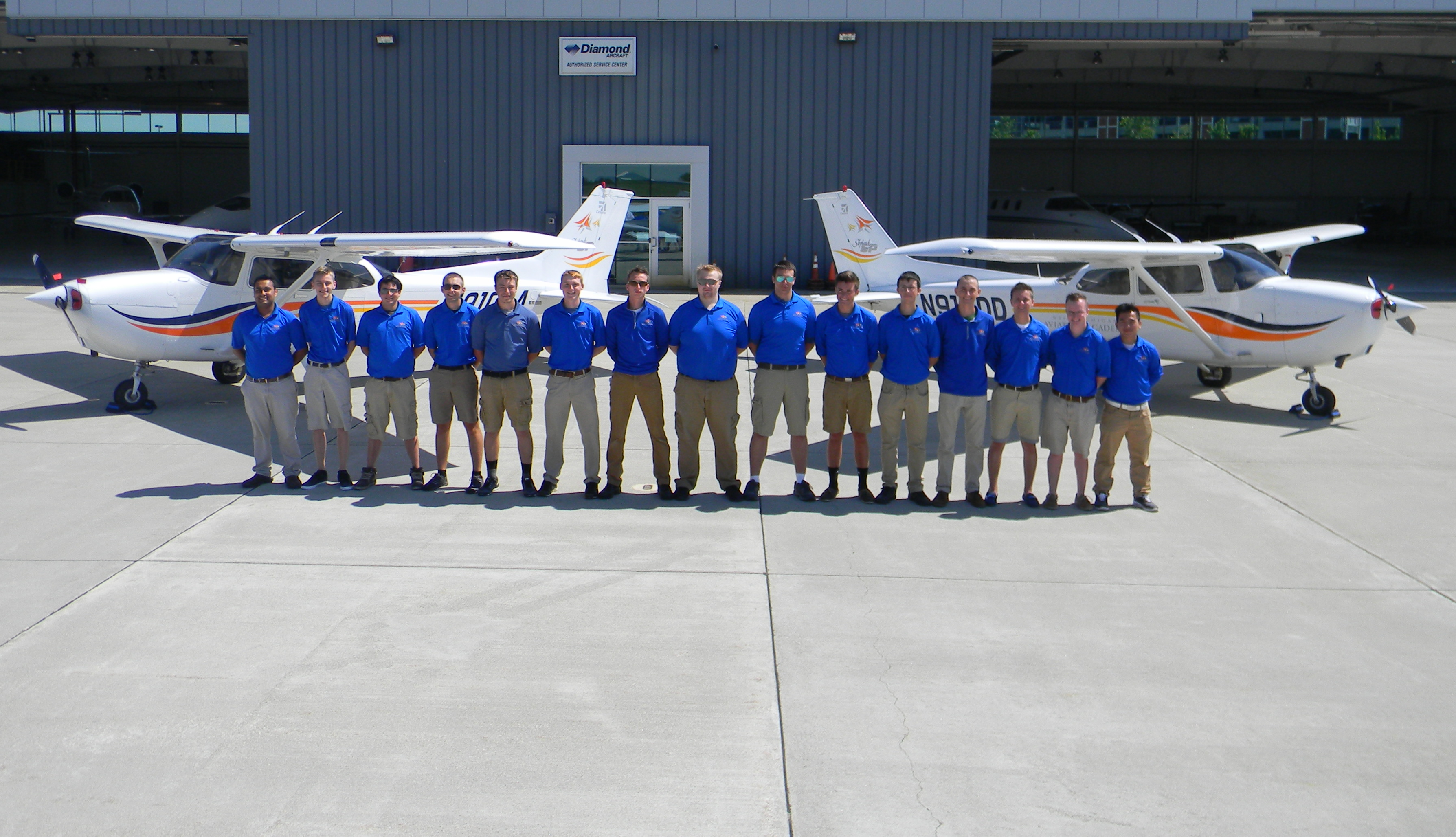Monetizing a Flight Simulator for Your High School Aviation Program
High schools continually look for ways to raise money for their programs, and aviation programs are no exception. Have you considered renting out your Redbird flight simulator to students from the local flight school or pilots in the area who wish to remain current?
Many flight schools do not have a flight simulator for their students to get additional training time. Yet, simulator time is an invaluable resource for student pilots to achieve their flight training goals.
According to the Federal Aviation Administration, a student can log 2.5 hours in a Basic Aviation Training Device (BATD) or an Advanced Aviation Training Device toward the 40 hours needed for a private pilot certificate. Up to 20 hours in an AATD are loggable toward an instrument rating (10 in a BATD). In an AATD, learners also may log 50 hours toward the 250 hours needed to earn a commercial pilot certificate.
These loggable hours only scratch the surface of the benefits a flight simulator can provide students and general aviation pilots. The controlled environment of the simulator is ideal for scenario-based training, learning air traffic control communications, practicing an upcoming flight with real-time weather conditions, and even learning an approach into an international airport. The use cases are nearly endless.
If you are a high school teacher, stop and think about this for a minute. Unless you have a magic lamp that pumps unlimited dollars into your program, you must find ways to fundraise (aside from your yearly budget, which can vary significantly between schools across the United States). When I taught high school aviation classes, I always looked for additional ways to help fund my programs.
Things to Consider Before Renting Out Your Flight Simulator
Getting approval
Depending on your school, you may or may not require a school official — for example, an administrator, Career and Technical Education Director, or principal — to approve the use of school property to raise money for your program. Before seeking approval, I recommend preparing for questions about cost, time, personnel, visitors on campus who aren’t students, wear and tear, service, and liability.
That last talking point is often the one that will make schools and districts say no to your idea. Be ready to answer those questions, demonstrate how much your program will benefit, and prove to the people in charge that it will not cost the school or district anything (they tend to like that).
At one of my former schools, I asked the CTE Director if we could rent time on our Redbird FMX, and he wanted to wait a year before approving it. The next year, he approved it! The CTE Director often controls the purse strings, and I’m sure he liked the idea that additional money could help offset costs.
Another thing to consider is the availability of a Certified Flight Instructor. If you are not a CFI, and a student needs one with them, who will you bring in to help? Are they an independent flight instructor, or do they instruct for a flight school? Do they need to be cleared to be on campus after hours?
How does your program get paid?
As a teacher, you must be extremely careful about collecting or handling money. Your school has a protocol for that, and if you have any doubts, you should talk to an administrator before you ever have someone give you money.
A check written to the school or program is a great option. Your school may have a money collection portal on its website for this purpose. Check with your student store or bookkeeper to make sure collecting the money is seamless and as hands-off as possible for you.
Another great option that avoids most of the hassle is setting your simulator charge as a “donation” to the program. This option is a win/win: The pilot may be able to write it off on their taxes as a donation, and the school will generally accept monetary donations without issue.
However, some school districts have specific paperwork you must complete if you accept a donation over a certain dollar amount. Be sure to check with the appropriate people in your school or district.
You also may be able to collect the donation for service or maintenance of the machines. If your school or district does not pay for an extended warranty through Redbird, you could consider putting the money toward that expense. Redbird offers a yearly flat rate or a rate per Hobbs hour for its extended warranty. I highly recommend you have an extended warranty for your flight simulators.
What should you charge?
The pricing for flight simulator time can vary significantly between flight schools. Some price hourly, and others sell a block of hours to use the simulator.
A quick search online shows Redbird FMX hourly pricing from $40 to $89 per hour. However, pricing may vary depending on your region, the type of simulator, and its condition and features (for example, Insight, motion, glass or steam configuration, multi-engine).
I recommend looking at flight schools nearby to see if other Redbird flight simulators are in use. If you cannot find many within a 30-mile radius, you could have the market all to yourself!
Market Your Flight Simulator
Start with your local flight schools, especially if they don’t have Redbird flight simulators at their location. Let them know you have one (or more) available for a “donation” to your school’s program.
If you need a CFI, talk with one or two and see if they would be interested in coming to your school with their students or willing to help with other learners who may require a CFI. Learners using the simulator can pay the CFIs directly. That should not be an issue unless the flight school does not allow its CFIs to freelance.
See if the flight school will let you put up a small poster or flier to promote time in your flight simulator. It’s a small marketing expense that could pay solid rewards to your aviation program.
Attend your local EAA chapter meeting to tell them about your Redbird simulator. Some pilots may want to fly it for fun rather than for training time or to maintain currency. That works great! You should gladly accept a donation for them to fly it.
Have some of your creative students shoot and edit a video for social media showcasing the simulator. Push it out on your accounts and have your students do the same.
How To Find a Redbird Flight Simulator in Your Area
Did you know you can search for flight schools and academic institutions that operate a Redbird flight simulator?
- Go to the Redbird website.
- Click on Find A Redbird at the top of the page.
- Type in a city or state, and a list of nearby Redbird simulators will appear (specifying the simulator model at each location).
Let’s say your local flight school does not have a Redbird flight simulator, but you want to find one to stay instrument current. You live in Illinois, and after a quick search, you discover 16 locations throughout the state with Redbird flight simulators.
Since you need at least a BATD or an AATD to log time that satisfies the currency requirements and you prefer to train in a full-motion device, you filter the list for the Redbird FMX or MCX. The list narrows, leaving seven locations in the state with those simulators.
When you purchase a Redbird simulator, you can opt-in for your school to appear on this list, and pilots searching for a Redbird can find your program!
A Final Word
Redbird simulators are an excellent tool to help students learn to fly and for existing pilots to maintain currency and proficiency. If your school or district will work with you, you can put additional money into your program without any effort on the part of the school or district.
However, you will need to spend additional time at the school for learners to come and fly the simulator. You don’t want people using your equipment without you present.
Spend time determining how and what your program gets paid, marketing your simulator, and, ultimately, putting some easy money into your aviation program.
Share this
You May Also Like
These Related Articles

Cross-Country Flight in a High School Classroom? There’s a Sim for That.

Four Awesome STEM Programs Powered by Aviation
.jpg)
.png?width=1500&height=1066&name=CM2A0024-2%20(2).png)
